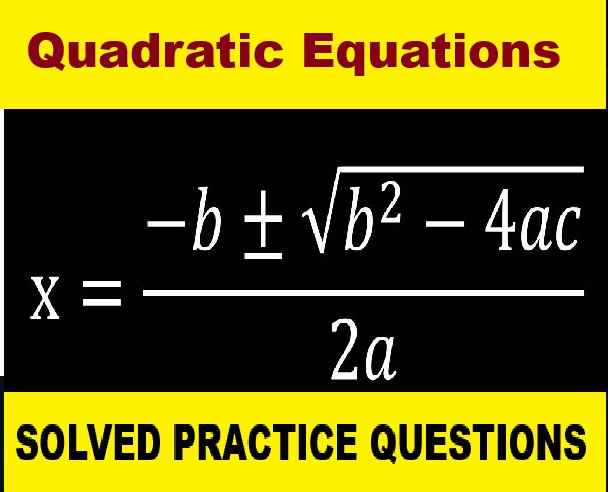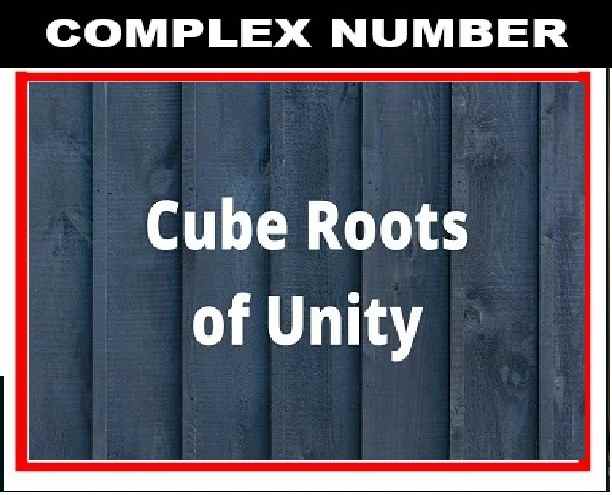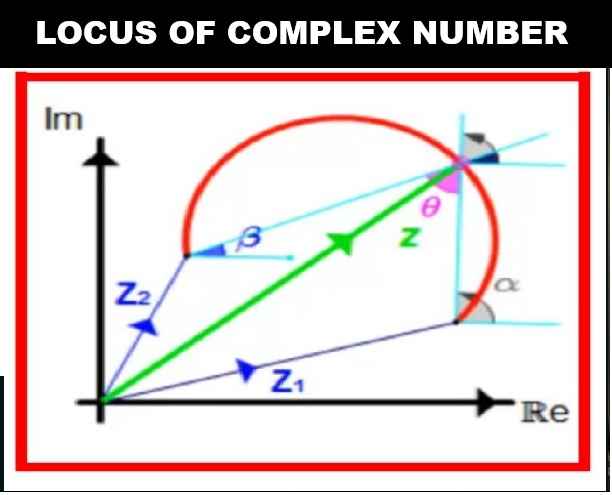Reflection at Curved Surfaces Class-8th Goyal Brothers Physics Solutions Chapter-5 (Light Energy), unit-2 (Reflection at Curved Surfaces). We Provide Step by Step Answers of Objective, True False, Incorrect and Correct, Fill in the blanks, Match the following , Short/Long Answer Type of Chapter-5 (Light Energy), unit-2 (Reflection at Curved Surfaces) Visit official Website CISCE for detail information about ICSE Board Class-8.
Reflection at Curved Surfaces ICSE Class-8th Goyal Brothers Physics Solution Chapter-5 Unit-2
| Board | ICSE |
| Class | 8th |
| Subject | Physics |
| Book Name | Goyal Brothers |
| Chapter-5 | Light Energy |
| Unit-2 | Reflection at Curved Surfaces |
| Topic | Solution of exercise questions |
| Session | 2023-24 |
OBJECTIVE QUESTION
Reflection at Curved Surfaces ICSE Class-8th Goyal Brothers Physics Solution Chapter-5 Unit-2
Que: A. Fill in the blank spaces by choosing the correct words from the list given below :
List : concave, principal axis, spherical, convex mirror, principal focus
1. A curved mirror which was a part of hollow sphere is called a spherical mirror.
2. An imaginary line passing through the pole and the center of curvature of a spherical mirror is called the principal axis.
3. A spherical mirror which is polished from hollow side, such that the reflecting surface is towards the outer side is called convex mirror.
4. When the face is held close to a concave mirror, it forms a virtual, erect and enlarged image.
5. The point of the principal axis, when a beam of light travelling parallel to the principal axis, after reflection actually meets is called the principal focus of concave mirror.
Que: B. Statements given below are incorrect. Write the correct statements :
Question: 1. The hollow surface of a concave mirror is silvered, such that its outer surface acts as reflecting surface.
Answer: The hollow surface of a concave mirror is silvered, such that its inner surface acts as reflecting surface.
Question: 2. When the object is at infinity in front of a convex mirror, it forms a real, erect and highly diminished image.
Answer: When the object is at infinity in front of a convex mirror, it forms a virtual, erect and highly diminished image.
Question: 3. A convex mirror can be used as a shaving glass as it forms virtual and enlarged image.
Answer: A concave mirror can be used as a shaving glass as it forms virtual and enlarged image.
Question: 4. Any ray of light which initially passes through the principal focus of a spherical mirror, after reflection passes through center of curvature.
Answer: Any ray of light which initially passes through the principal focus of a spherical mirror, after reflection passes through parallel.
Question: 5. Concave mirrors are used as street light reflectors.
Answer: Convex mirrors are used as street light reflectors.
Que: C. Write ‘True’ or ‘False’ for the following statements :
| Statement | True/False |
| 1. Geometric center of a spherical mirror is called its center of curvature. | T |
| 2. A convex mirror always forms virtual and diminished images. | T |
| 3. When the object is at center of curvature of a concave mirror, its image is formed at the center of curvature. | T |
| 4. Concave reflectors are used in street lights. | F |
| 5. A concave mirror can be used for close make up or shaving glass. | T |
Que: D. Tick (√) the most appropriate answer:
1. The geometric center of a spherical mirror is called its :
(a) center of curvature
(b) principal focus
(c) pole
(d) none of these
Answer: option (a) center of curvature is correct.
2. A parallel beam of light, parallel to the principal axis of a concave mirror, on reflection meets at the :
(a) center of curvature
(b) principal focus
(c) infinity
(d) none of these
Answer: option (b) principal focus is correct.
3. A mirror which always forms a virtual, diminished and erect image of an object is :
(a) plane mirror
(b) concave mirror
(c) convex mirror
(d) none of these
Answer: option (c) convex mirror is correct.
4. A mirror which is always used as a rear view mirror for vehicles is :
(a) plane mirror
(b) concave mirror
(c) convex mirror
(d) none of these
Answer: option (c) convex mirror is correct.
5. An object is between the principal focus and the center of curvature of a concave mirror, the image formed is real and:
(a) same size as an object
(b) smaller than object
(c) bigger than object
(d) none of these
Answer: option (c) bigger than object is correct.
Que: E. Match the statements in Column A, with those in Column B :
| Column A | Column B |
| 1. An imaginary line passing through the pole and the center of curvature of a spherical mirror. | (a) Principal focus |
| 2. A point on the principal axis of a concave mirror, where parallel beam of light after reflection meets. | (b) Convex mirror |
| 3. The center of the sphere of which spherical mirror is a part. | (c) Principal axis |
| 4. A spherical mirror which always forms a virtual, erect and diminished image. | (d) Concave mirror |
| 5. A spherical mirror, which can form a virtual, erect and enlarged image. | (e) Center of curvature |
Answer:
| Column A | Column B |
| 1. An imaginary line passing through the pole and the center of curvature of a spherical mirror. | (a) Principal axis |
| 2. A point on the principal axis of a concave mirror, where parallel beam of light after reflection meets. | (b) Principal focus |
| 3. The center of the sphere of which spherical mirror is a part. | (c) Center of curvature |
| 4. A spherical mirror which always forms a virtual, erect and diminished image. | (d) Convex mirror |
| 5. A spherical mirror, which can form a virtual, erect and enlarged image. | (e) Concave mirror |
STUDY QUESTION
Reflection at Curved Surfaces ICSE Class-8th Goyal Brothers Physics Solution Chapter-5 Unit-2
Question: 1. Define the following :
(a) Principal axis
Answer: The line passing through the optical center and centers of curvature of the faces of a lens or a curved mirror.
(b) Focal length
Answer: Focal length is defined as the distance between the optical center and the focus of the lens.
(c) Pole
Answer: It is the geometrical center of the reflecting surface. It is represented by the letter P.
(d) Center of curvature
Answer: The center of curvature of a curve is found at a point that is at a distance from the curve equal to the radius of curvature lying on the normal vector.
Question: 2. Draw neat diagrams and state the characteristics of image formed when :
(a) An object is placed between the principal focus and center of curvature of a concave mirror.
Answer: 
When an object is placed between the centre of curvature and the principal focus of a concave mirror, its image is formed beyond the centre of curvature. The image formed is real, inverted and magnified.
(b) An object is placed between the principal focus and pole of a concave mirror.
Answer: 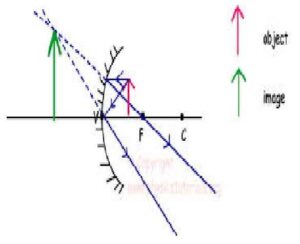
When an object is placed between the focus and the pole of a concave mirror, the image is virtual, erect and enlarged.
(c) An object is any where between the pole and infinity of a convex mirror.
Answer: 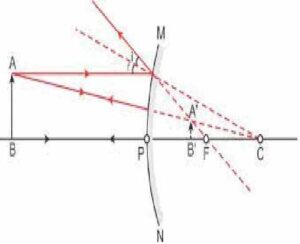
between infinity and pole of the mirror- will be virtual, magnified, and behind the mirror. The image formed by a convex mirror if the object is placed: at infinity- will be virtual, diminished, and behind the mirror.
Question: 3. State two uses of
(a) Concave mirror
Answer: Two uses of concave mirror:
(i) It is used as a shaving mirror.
(ii) It is used as reflector in torch, head light of automobiles etc.
(b) Convex mirror
Answer: Two uses of Convex mirror:
(i) When convex mirrors are used, the magnification of objects becomes simple.
(ii) It is used in sunglasses.
Question: 4. State two differences between a real image and a virtual image.
Answer: Real image: (i) Real images are obtained using a converging lens or a concave mirror.
(ii) The size of the real image depends upon the placement of the object.
virtual image: (i) A virtual image is an upright image that is achieved where the rays seem to diverge.
(ii) A virtual image is produced with the help of a diverging lens or a convex mirror.
Question: 5. You are provided with (a) a plane mirror, (b) a convex mirror and (c) a concave mirror. How will you distinguish between them, without touching them?
Answer: We can distinguish between the three mirrors by looking into them:
(a) The image formed by the plane mirror is laterally inverted and of the same size as the object.
(b) The image formed by the convex mirror will be erect and diminished in size.
(c) The image formed by the concave mirror will be enlarged and erect if it is placed very close to the face.
— : end of Reflection at Curved Surfaces Class-8th Goyal Brothers ICSE Physics Solution Chapter-5 Unit-2 :–-
Return to- ICSE Class -8 Goyal Brothers Physics Solutions
Thanks
Please share with your friends if you find it useful
